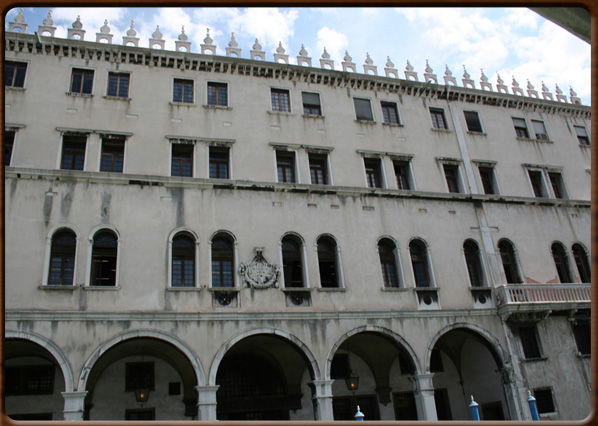
Old spice trade.

Sale of spices.

The old apothecary of San Servolo.

Fondaco dei Tedeschi.




No video
Spices are parts of plants (roots, bark, seeds and flowers) and offer us the most precious perfumes (resins and essential oils). The best known spices since ancient times in the Mediterranean and Europe were cinnamon, nutmeg, pepper, ginger and cloves.
Indeed, these were often attributed divine powers.
The ancient Greeks mainly used spices for religious purposes and sacrifice, whereas the Romans under Augustus used them to prepare food and enhance the flavour of wine, as well as for cosmetic and medicinal purposes.
From the 9th Century onwards, the Maritime Republics of Venice and Genoa made their fortunes on the spice trade, this being the main object of their ships setting sail for the Levante. To begin with, the Germans were Venice’s best customers: they loved the more traditional spices, but also cardamom, cumin, cubebe, coriander and an infinite number of other highly profitable spices.
Widespread use of oriental spices in Europe met the need to disguise the flavour of the meat (at the time often slightly “off” due to imperfect preserving techniques) which formed the basis of the people’s diet. Even more important was the use of certain spices for pharmaceuticals: in addition to their proven effects in aiding the digestion, they were also believed to be effective against the plague.
Many exploratory ocean voyages in the 15th Century were specifically organised to find faster, safer routes to the spice countries and so cut out the expensive Arab middlemen. The military, political and financial power of the Arab countries began to decline in 1498 when Vasco Da Gama opened the sea route between Portugal and the West Indies. Holland and Britain soon followed suit, having always been strong traders in spices. They also extended their trade routes to the American continent, adding new products in ever greater demand to spices: cocoa, tea and coffee.
In the early 1600s, the spice market (the basis for Venice’s wealth) was increased by these other trading countries to the point that there was a sharp fall in price.
This marked the start of the decline in Venice’s economy and that of the other Mediterranean maritime city states.
400 - 1000 - - rev. 0.1.6